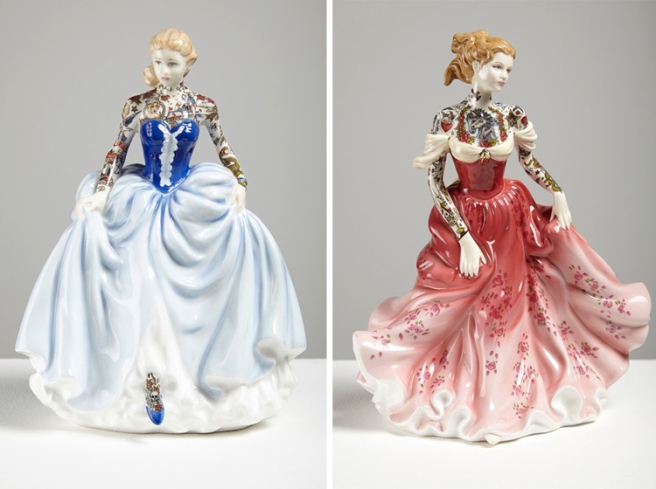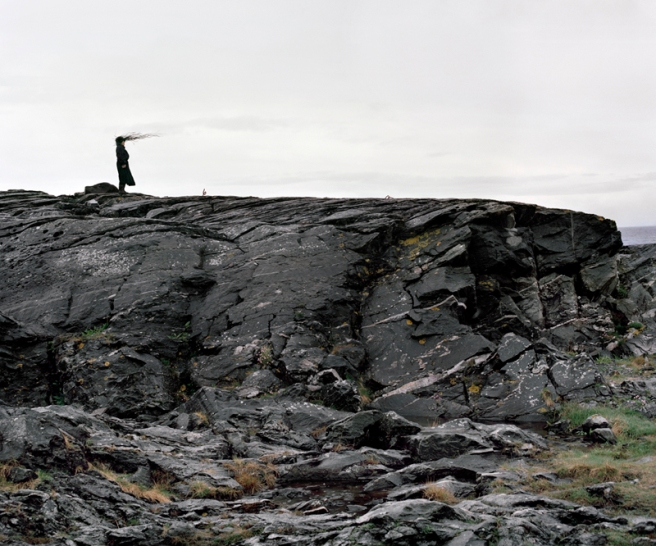 I was a druid in a past life. I wore a big cloak that covered my face, but not in a threatening, Sith lord-kinda way. Rather, it shielded me. My black hood was a protective, ceremonial garment. I held a flame, a candle or a lamp, a little shard of fire that I carried with me, leading the worshippers over a mossy green expanse of hillside, toward something, something that spoke to death without words or sound.
I was a druid in a past life. I wore a big cloak that covered my face, but not in a threatening, Sith lord-kinda way. Rather, it shielded me. My black hood was a protective, ceremonial garment. I held a flame, a candle or a lamp, a little shard of fire that I carried with me, leading the worshippers over a mossy green expanse of hillside, toward something, something that spoke to death without words or sound.
Or so I’ve heard.
Recently, I visited a spiritual healer for the very first time. I was waiting the pharmacist to refill my prescriptions at CVS. I had just added a new medication to my cocktail of brain-changing pills, and she told me that it was going to take longer than usual. So to kill time, I walked next door to the local crystal-and-tarot-card New Agey snake-oil-or-not purveyor. I browsed the bookshelves and snapped Instagram-ready pictures of the three-foot-tall “Amethyst Cathedral.” I picked up some incense, sage, and Palo Santo sticks. (My house smells like dogs. It’s fine, but you know, sometimes people come over and whatever.) In the back of the store, two women in long dresses sat in a pair of armchairs, facing each other and talking in that tone that I’ve always mentally called the “therapist voice.” A poster above the counter advertised “Spiritual Healing, Energy Readings, and Reiki.”
Reiki has always seemed like a pointless exercise for me. Like, touch me, or don’t, you know? So I chose the other lady. (I also asked them about their rates. The spiritual healer was willing to do a 15-minute session, and that’s how long my medication was going to take. The Reiki lady required a half-hour commitment, which just felt like a lot.)
She walked with me to a room in the back of the store, a little cupboard-like nook with two chairs, a small table, and a floor lamp that cast a soft, yellow glow onto the India-printed curtain that served as a door. (Say what you will about healers, psychics, mystics, and the like, but they know how to properly light a room.) We sat down, and she began her reading.
She talked for 15 minutes straight, so I think I got my money’s worth. And, you know, I don’t really believe everything she said. I don’t know whether Maeve, the Celtic queen whose name means “intoxicated woman” is really my spiritual guide and I doubt that there is an angelic presence around me that appears as a ball of “clear, blue light.” It would be wonderful if I had a guardian angel, but that ship has very clearly sailed. I don’t know if I will have children or not (she says I will have three, twins and a single child). I don’t know if I was anything other this current iteration of me, I don’t know if I believe in reincarnation. I don’t even know if I like the idea.
But also… I don’t not believe.
And honestly, it felt weirdly good to sit there with her. Really weirdly good. Her focus was so intense. It’s not often that we spend such an extended amount of time directing all our faculties toward another person. And she seemed to do this with her whole body, her entire self was pushed toward me in an unsettling way. She stared at the space around my body, examining the air. She sniffled occasionally, and I couldn’t help but wonder if she was trying to smell my secrets out. At one point, she reached across the table and held my hand. Hers were gentle, soft and dry, her grip felt like sinking my hand into a vat of flour, encompassing and forgiving. I know, logically, that I probably just paid someone to say nice things to me for 15 minutes, but I think that’s okay. I’ve spent money on far worse things. I left feeling satisfied, full and light, like I had just slurped down a plate of oysters. It was treat-yo’-self-behavior. A self-indulgent way to spend a portion of my workday.
But still. I don’t believe but I do hope. I hope she’s right. A world without even the possibility of magic isn’t one I want to live in.
Image: Painting by Martine Emdur

 Here’s a statistic that should make your blood boil: on average, only 5% of the pieces in permanent collections of museums around the globe were created by women. 95% of the art that has been purchased by museums—the very institutions that safeguard our culture—was created by men.
Here’s a statistic that should make your blood boil: on average, only 5% of the pieces in permanent collections of museums around the globe were created by women. 95% of the art that has been purchased by museums—the very institutions that safeguard our culture—was created by men.  I once read that the most expensive paint colors were also the most difficult to describe. We can all picture buttercup yellow, but can you imagine a sandy mixture of yellow with hints of pink and gray? Or that pretty, silvery green color that so often appears on spring things, like lambs ear or
I once read that the most expensive paint colors were also the most difficult to describe. We can all picture buttercup yellow, but can you imagine a sandy mixture of yellow with hints of pink and gray? Or that pretty, silvery green color that so often appears on spring things, like lambs ear or 
 I’ve been thinking a lot about bats lately, which is due in part to working at
I’ve been thinking a lot about bats lately, which is due in part to working at  I was so taken by the bats that I went back the next evening, and again the next. The sight soothed me with its strangeness, its utter unfamiliarity. I felt better, watching those bats. Less lonely somehow.
I was so taken by the bats that I went back the next evening, and again the next. The sight soothed me with its strangeness, its utter unfamiliarity. I felt better, watching those bats. Less lonely somehow. I was a druid in a past life. I wore a big cloak that covered my face, but not in a threatening, Sith lord-kinda way. Rather, it shielded me. My black hood was a protective, ceremonial garment. I held a flame, a candle or a lamp, a little shard of fire that I carried with me, leading the worshippers over a mossy green expanse of hillside, toward something, something that spoke to death without words or sound.
I was a druid in a past life. I wore a big cloak that covered my face, but not in a threatening, Sith lord-kinda way. Rather, it shielded me. My black hood was a protective, ceremonial garment. I held a flame, a candle or a lamp, a little shard of fire that I carried with me, leading the worshippers over a mossy green expanse of hillside, toward something, something that spoke to death without words or sound.

 My favorite images from
My favorite images from 
 I’ve been meaning to blog about
I’ve been meaning to blog about 




